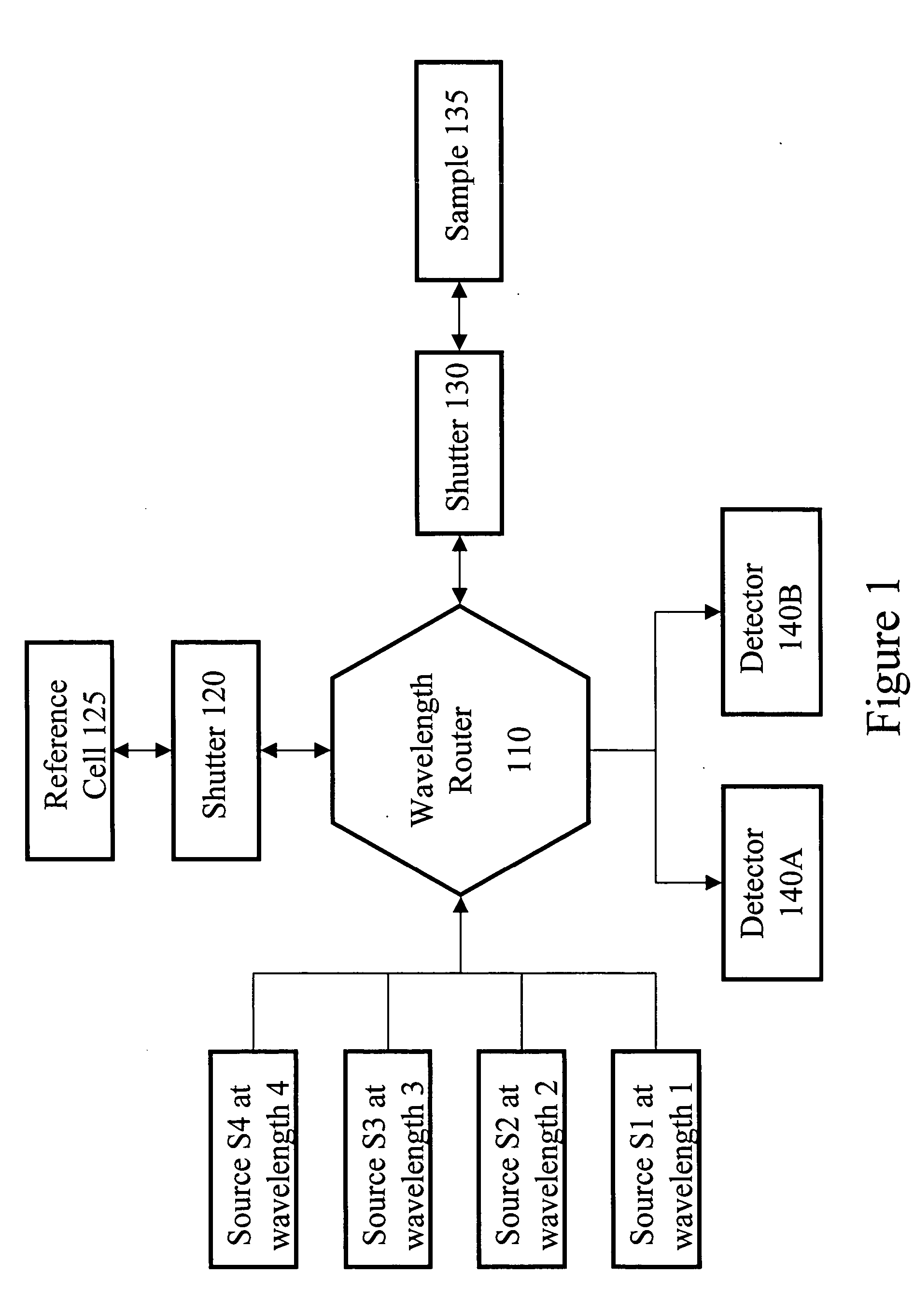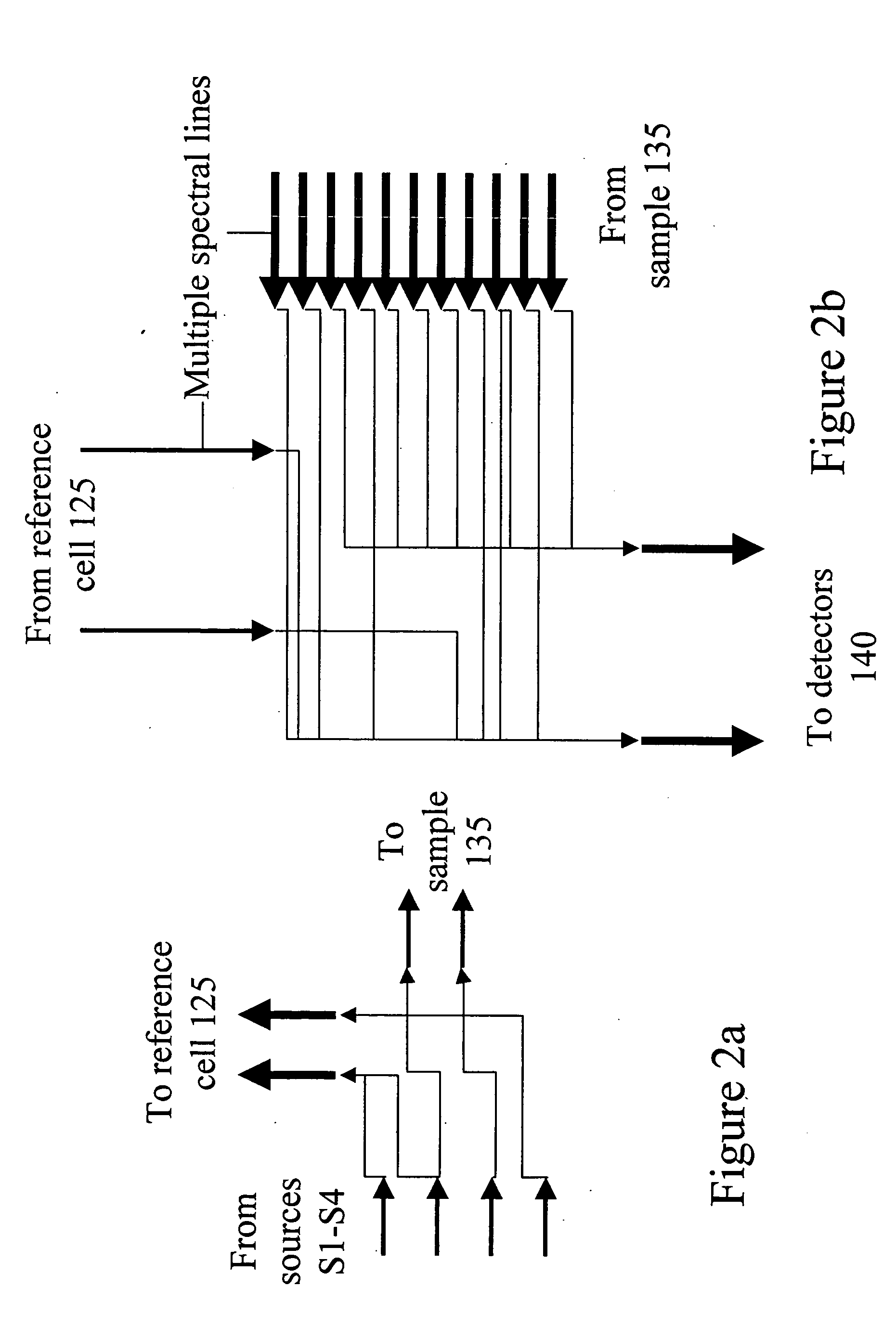Measuring analytes from an electromagnetic spectrum using a wavelength router
a wavelength router and electromagnetic spectrum technology, applied in the field of measuring analytes, can solve the problems of radiation only penetrated a few tens of microns into an organism, can only absorb spectroscopy in the visible or near infrared, and many compounds, so as to increase the signal-to-noise ratio of measurement and increase the input optical power
- Summary
- Abstract
- Description
- Claims
- Application Information
AI Technical Summary
Benefits of technology
Problems solved by technology
Method used
Image
Examples
Embodiment Construction
[0027]FIG. 1 is a high-level block diagram of a device according to the invention, primarily showing the optical functionality of the major components within the device. In this particular example, the device includes four sources S1-S4, two detectors 140A-B, a reference cell 125 and shutter 120, a sample 135 and shutter 130, and a wavelength router 110.
[0028] Generally speaking, the device operates as follows. The sources S1-S4 produce light that is routed by the wavelength router 110 to the reference cell 125 and / or sample 135 via the respective shutter 120,130. The shutters 120,130 allow time gating of the illumination. Light scattered from the reference cell 125 and / or sample 135 is routed by the wavelength router 110 to the detectors 140.
[0029] The sources S1-S4 are shown as having a diversity of wavelengths (wavelengths 1-4 in FIG. 1). The wavelength router 110 directs a linear combination of the incident light from the sources S1-S4 via the shutters 120,130 to the sample 13...
PUM
| Property | Measurement | Unit |
|---|---|---|
| angle | aaaaa | aaaaa |
| spectral widths | aaaaa | aaaaa |
| half width | aaaaa | aaaaa |
Abstract
Description
Claims
Application Information
 Login to View More
Login to View More - R&D
- Intellectual Property
- Life Sciences
- Materials
- Tech Scout
- Unparalleled Data Quality
- Higher Quality Content
- 60% Fewer Hallucinations
Browse by: Latest US Patents, China's latest patents, Technical Efficacy Thesaurus, Application Domain, Technology Topic, Popular Technical Reports.
© 2025 PatSnap. All rights reserved.Legal|Privacy policy|Modern Slavery Act Transparency Statement|Sitemap|About US| Contact US: help@patsnap.com



